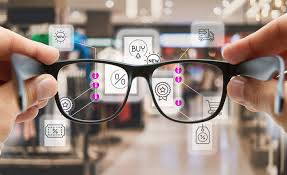views
The augmented reality glasses market is rapidly advancing from a futuristic concept to a dynamic sector of wearable technology. Once confined to labs and experimental showcases, AR glasses are now seeing growing applications in industries such as healthcare, education, manufacturing, retail, and entertainment. Several accelerators are propelling this market forward, turning early skepticism into increasing interest and investment.
This article explores the key factors accelerating the growth of the AR glasses market, detailing how innovations, infrastructure, and evolving user needs are converging to shape a promising future for this transformative technology.

1. Advancements in Hardware and Micro-Technology
One of the most critical accelerators is the technological miniaturization of components. Modern AR glasses benefit from compact, powerful hardware that includes high-resolution microdisplays, efficient processors, and lightweight batteries. These advancements enable manufacturers to design devices that are both high-performing and more comfortable to wear.
Enhanced optics, improved field of view, and integrated spatial computing are all making AR glasses more practical and immersive. As a result, the hardware is not only more functional but also more appealing to a broader range of users, from industrial technicians to everyday consumers.
2. Rise of 5G and Edge Computing
The rollout of 5G networks and advancements in edge computing are significantly enhancing the capabilities of AR glasses. These technologies reduce latency and allow for faster data transmission, enabling real-time rendering of complex AR visuals and seamless user experiences.
AR glasses connected to 5G networks can stream large amounts of data instantly, supporting applications such as remote surgery, real-time language translation, and interactive gaming. As connectivity improves, more industries are adopting AR for mission-critical tasks that demand speed, accuracy, and mobility.
3. Enterprise Adoption and Industrial Applications
Enterprises are increasingly embracing AR glasses to improve productivity, training, and operational efficiency. In sectors such as logistics, automotive, aerospace, and healthcare, AR glasses are being used for remote assistance, hands-free instructions, and on-the-job training.
For example, technicians wearing AR glasses can receive live support from remote experts or view 3D schematics overlaid on real-world equipment. This not only reduces errors and downtime but also accelerates onboarding and enhances safety. The return on investment from such applications continues to drive enterprise demand and innovation in the AR space.
4. Expanding Use in Healthcare and Education
Healthcare professionals are leveraging AR glasses for surgical planning, remote diagnostics, and patient engagement. These tools provide visual overlays that enhance understanding and precision during complex procedures. AR-assisted surgeries and real-time patient data visualization are no longer experimental—they are becoming essential tools in modern medical environments.
In education, AR glasses are transforming learning into an interactive experience. Students can visualize 3D models of the human body, historical artifacts, or scientific processes, enriching the learning experience across disciplines. As schools and universities adopt digital transformation strategies, AR technology is gaining traction as a core component.
5. Consumer Demand for Immersive Experiences
The growing popularity of immersive entertainment and digital lifestyles is fueling consumer interest in AR glasses. From gaming and virtual tours to enhanced shopping and fitness experiences, consumers are seeking devices that provide more engagement and personalization.
AR glasses can provide real-time contextual information, navigation assistance, and social media integration, aligning with the mobile-first, on-the-go culture of modern users. As prices become more affordable and content ecosystems grow, consumers are increasingly willing to adopt AR glasses for everyday applications.
6. Supportive Government and Private Sector Investment
Governments and private investors are pouring funds into AR research, development, and infrastructure. National innovation programs, defense contracts, and technology grants are supporting companies that are pushing the boundaries of AR capabilities.
Large tech corporations are also making strategic acquisitions and partnerships to expand their presence in the AR space. This investment ecosystem is not only fueling product innovation but also accelerating commercialization and global market reach.
7. Integration With AI and Machine Learning
The combination of AR glasses with artificial intelligence (AI) and machine learning (ML) is creating smarter, context-aware devices. These systems can recognize objects, interpret user behavior, and adapt interactions in real time. This creates new possibilities for personalized experiences and predictive support in professional settings.
AI-enhanced AR glasses are being used to monitor health vitals, assist in warehouse navigation, and provide intelligent notifications based on location or task. This fusion of technologies is a major accelerator for next-generation wearable computing.
Conclusion
The Augmented Reality Glasses Market is being driven by multiple accelerators that are pushing the technology toward mainstream adoption. From hardware breakthroughs and advanced connectivity to enterprise applications and consumer trends, the momentum behind AR glasses is stronger than ever.
As these accelerators continue to evolve and converge, the barriers that once slowed the market are gradually being overcome. The future of AR glasses lies in continued innovation, collaborative ecosystems, and the ability to deliver real-world value across both personal and professional spheres. If sustained, this momentum could see AR glasses become as indispensable as smartphones in the next wave of digital transformation.






















Comments
0 comment